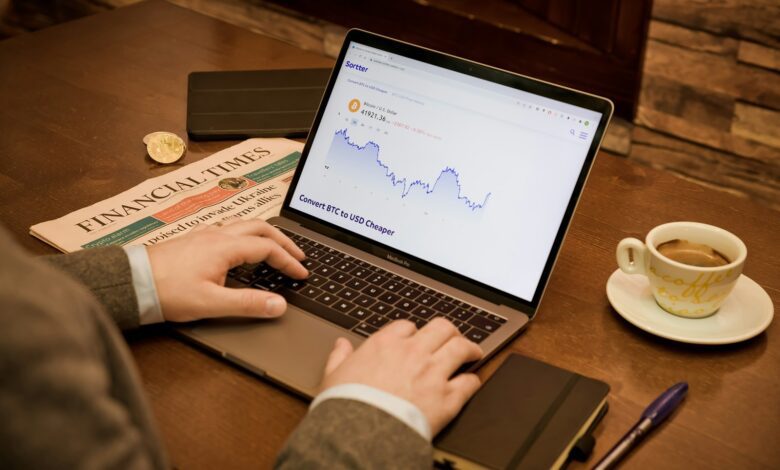Healthcare investing – demographic-driven opportunities

Allocating capital towards sectors addressing the aging population offers substantial potential for sustained growth. By 2050, individuals aged 65 and older will constitute nearly 16% of the global population, intensifying demand for medical treatments, chronic disease management, and long-term care solutions. This demographic shift directly fuels innovation in biotech firms developing targeted therapies and personalized medicine, positioning them as prime candidates for strategic investment.
The surge in age-related conditions such as Alzheimer’s, cardiovascular diseases, and diabetes necessitates advanced healthcare technologies and novel drug development. Companies focusing on precision diagnostics, gene editing, and regenerative medicine benefit from increased funding and regulatory support aimed at improving patient outcomes in aging cohorts. Monitoring these trends alongside clinical trial progress can reveal actionable entry points within the sector.
Investment strategies should incorporate demographic analytics to identify regions with rapidly expanding elderly populations paired with rising healthcare expenditure. For example, emerging markets in Asia-Pacific show accelerated growth due to improving infrastructure combined with a growing middle class demanding higher-quality care. This intersection of population dynamics and innovation-driven healthcare solutions creates a robust framework for portfolio diversification focused on longevity economies.
Demographic Trends Shaping Strategic Allocations in Medical Sectors
Focusing capital on sectors affected by shifting age structures reveals significant potential for enhanced returns. The global rise in elderly populations, particularly in developed economies, intensifies demand for novel therapeutic solutions and advanced medical devices. This shift necessitates targeted allocation toward enterprises developing innovative biotechnologies aimed at chronic disease management and age-related conditions.
Data from the United Nations projects that by 2050, individuals over 65 will comprise nearly 16% of the world population, a substantial increase from current figures. This demographic evolution drives substantial growth in markets related to geriatric care, personalized medicine, and regenerative therapies. Prioritizing resources into companies addressing these needs aligns with long-term value creation strategies.
Investment Dynamics within Biotechnological Innovations
The surge in biotechnology firms focusing on gene editing, cellular therapies, and precision medicine presents measurable prospects for portfolio diversification. CRISPR-based platforms and mRNA technology advancements have demonstrated efficacy not only in infectious diseases but also in oncology and rare genetic disorders. Evaluating clinical pipeline robustness alongside regulatory milestones is critical when allocating assets.
For instance, recent phase III trials of CAR-T therapies show increased remission rates for hematologic malignancies, indicating a shift toward curative rather than palliative treatment models. Investors should consider intellectual property portfolios and partnerships with research institutions as indicators of sustained innovation capacity.
An aging society also elevates demand for digital health solutions incorporating AI-driven diagnostics and remote monitoring systems. These technologies reduce healthcare costs while improving patient outcomes through continuous data analytics. Publicly listed companies integrating blockchain for secure patient data exchange offer additional layers of transparency and operational efficiency worth examining.
Regulatory frameworks across jurisdictions are adapting to expedite approval processes for breakthrough therapies while maintaining safety standards. Investors should monitor policy developments such as expedited review pathways and reimbursement reforms that can accelerate commercial viability timelines.
Diversifying exposure by including emerging market players addressing local demographic shifts may also enhance risk-adjusted returns. For example, Asian countries experiencing rapid population aging are investing heavily in biotech startups focused on neurodegenerative diseases prevalent within their regions. A geographically balanced strategy could capitalize on heterogeneous growth patterns tied to population dynamics.
Targeting Aging Population Needs
Allocating capital toward sectors addressing the needs of an aging demographic yields measurable returns by focusing on precision medicine, advanced diagnostics, and long-term care solutions. Data from the World Health Organization projects that by 2050, individuals aged 60 and above will comprise over 22% of the global population, necessitating scalable innovations in medical technologies and supportive care infrastructures. Strategic allocation into biotechnology firms specializing in geriatric therapeutics can capitalize on breakthroughs in senolytics and regenerative medicine aimed at mitigating age-related pathologies.
The intersection of demographic trends and technological advancement fosters a conducive environment for enterprises developing AI-powered diagnostic tools tailored for chronic conditions prevalent in older adults. Clinical validation studies demonstrate that machine learning algorithms improve early detection rates of neurodegenerative diseases such as Alzheimer’s by up to 30%, offering potential to reduce overall healthcare expenditures through preventive intervention. Understanding these dynamics is critical when evaluating portfolios targeting longevity-focused innovation.
Technological Innovation Driving Geriatric Care
Emerging platforms utilizing blockchain technology enhance data security and interoperability within electronic health records (EHR), ensuring compliance with stringent regulatory frameworks like HIPAA and GDPR while facilitating seamless patient information exchange among providers. This decentralized approach reduces administrative overhead and accelerates clinical decision-making processes crucial for managing multifaceted comorbidities common in elderly patients. Investors should consider companies integrating distributed ledger systems that demonstrate robust proof-of-concept pilots with healthcare institutions.
Biotechnological advancements extend beyond therapeutics into biomarker discovery, leveraging high-throughput sequencing and proteomics to identify molecular signatures predictive of frailty and cardiovascular risk. For example, startups implementing CRISPR-based gene editing techniques show promising preclinical results targeting mitochondrial dysfunction associated with aging cells. Incorporating such entities into asset allocations requires rigorous assessment of their intellectual property pipelines, regulatory milestones, and scalability potential within existing healthcare frameworks.
The demand for remote patient monitoring devices continues to escalate due to increased prevalence of mobility limitations among seniors. Wearable sensors capable of continuous vital sign tracking coupled with IoT connectivity enable real-time health status updates, reducing hospital readmission rates by approximately 25% according to recent meta-analyses. Evaluating technology providers with demonstrated integration capabilities across multiple platforms offers a competitive edge given the fragmented nature of current eldercare ecosystems.
Financial strategies focusing on therapeutic areas impacted by population aging must also account for policy shifts influencing reimbursement models and public funding allocations. Countries implementing value-based care paradigms incentivize outcomes-driven interventions, favoring products demonstrating clear efficacy improvements and cost reductions over traditional treatment modalities. Consequently, portfolio diversification including both established pharmaceutical companies expanding geriatric portfolios and nimble biotech innovators targeting niche indications aligns with evolving payer expectations.
Investing in Chronic Disease Care
Allocating capital toward chronic illness management presents a strategic avenue aligned with shifting population dynamics and rising prevalence of non-communicable diseases. Data from the World Health Organization indicates that chronic conditions such as diabetes, cardiovascular diseases, and respiratory disorders account for approximately 71% of global deaths annually. This epidemiological trend drives demand for innovative therapeutic solutions, medical devices, and digital health platforms tailored to long-term disease management. Entities specializing in biotechnology are increasingly focusing on molecular diagnostics and personalized medicine approaches to enhance treatment efficacy and patient adherence.
Financial engagement in this sector benefits from demographic trends characterized by aging populations and extended life expectancy across developed and emerging markets. For instance, countries with higher proportions of individuals aged 65 and above exhibit greater healthcare expenditure directed at chronic care services. Investment vehicles targeting companies developing advanced biologics or AI-powered monitoring systems demonstrate robust growth potential due to their capacity to reduce hospitalization rates and improve quality of life. Moreover, regulatory frameworks incentivizing value-based care models augment the attractiveness of firms innovating within this space.
Technological Innovation and Market Drivers
The integration of blockchain technology offers promising enhancements in data security, patient privacy, and interoperability across healthcare providers managing chronic illnesses. Projects utilizing decentralized ledgers enable transparent tracking of treatment regimens and real-time data sharing among stakeholders, which can optimize clinical decision-making processes. Biotech firms leveraging gene-editing technologies like CRISPR-Cas9 are advancing novel therapies targeting underlying genetic factors contributing to chronic pathologies. These scientific breakthroughs align with investment strategies focused on high-impact innovation capable of disrupting traditional care paradigms.
Case studies reveal differentiated performance patterns within subsegments such as remote patient monitoring devices versus pharmaceutical development pipelines. For example, companies producing wearable sensors embedded with biosensors have experienced accelerated adoption rates amid increased telemedicine utilization post-pandemic. Conversely, late-stage clinical trials for monoclonal antibodies addressing autoimmune diseases require careful risk assessment given extended timelines and regulatory scrutiny. Portfolio diversification across these modalities can mitigate volatility while capturing upside associated with demographic shifts and technological progress.
Capitalizing on Telehealth Growth
Strategic allocation toward telemedicine platforms can yield significant returns as the global population ages and chronic disease prevalence rises. Data from Frost & Sullivan estimates a compounded annual growth rate (CAGR) of 24.7% for telehealth markets through 2028, driven by increased demand for remote patient monitoring and virtual consultations. Integrating biotech advancements such as wearable biosensors enhances diagnostic accuracy outside traditional clinical settings, expanding scope and scalability.
The surge in demand for remote care solutions corresponds with shifts in population age structures, particularly in developed economies where the proportion of individuals over 65 is projected to exceed 20% within the next decade. This demographic trend creates persistent pressure on conventional medical infrastructures, incentivizing innovation in decentralized care delivery models. Blockchain implementations further secure patient data exchanges while streamlining reimbursement processes, addressing regulatory compliance and privacy concerns.
Technological Innovations Accelerating Adoption
Recent breakthroughs in artificial intelligence algorithms facilitate real-time analysis of biometric data collected via telehealth devices, enabling early detection of conditions such as arrhythmias or diabetic neuropathy. For instance, FDA-approved AI-powered platforms demonstrate diagnostic sensitivity improvements exceeding 15% compared to standard protocols. These innovations complement biotech developments producing minimally invasive sensors integrated into consumer electronics, allowing continuous health status tracking without clinical visits.
The expansion of broadband access and mobile network coverage has also mitigated previous barriers to telemedicine deployment across rural populations with limited healthcare infrastructure. According to the World Bank, approximately 60% of rural households globally now have internet connectivity sufficient for video consultations. This infrastructural improvement unlocks new market segments that were traditionally underserved due to geographic isolation and scarcity of specialized providers.
Financial frameworks supporting telehealth ventures increasingly incorporate tokenization strategies on blockchain networks to enhance liquidity and transparency for investors while aligning incentives among stakeholders. Projects utilizing smart contracts automate milestone-based funding releases tied to clinical outcomes or user engagement metrics, reducing friction between biotech innovators and capital sources. Such mechanisms foster sustainable growth by ensuring accountability and performance verification throughout development cycles.
Regulatory adaptations remain pivotal; jurisdictions updating telemedicine guidelines with clear standards on cross-border service provision and licensing catalyze broader adoption. The European Commission’s recent Digital Health Action Plan exemplifies policy evolution favoring interoperability standards and data sovereignty principles critical for scaling international telehealth operations. Investors must consider these legislative trajectories when assessing risk profiles within emerging digital care ecosystems.
Funding innovations for seniors: strategic capital allocation in aging populations
Allocating resources toward advancements targeting the elderly segment presents a compelling avenue for capital deployment, driven by shifting population structures. Precision biotech platforms leveraging genomic data and AI-powered drug discovery pipelines exemplify scalable innovations tailored to age-related pathologies, offering measurable clinical impact alongside attractive financial returns.
Integrating blockchain-based patient data management systems enhances transparency and accelerates regulatory compliance, reducing time-to-market for novel therapeutics. This synergy between technology and biological research underpins sustainable value creation amid evolving demographic dynamics influencing demand for specialized medical solutions.
Key insights and forward-looking considerations
- Population aging trends: Current projections indicate a substantial rise in the over-65 cohort globally, necessitating targeted interventions that improve quality of life while optimizing healthcare expenditure.
- Biotech innovation pipelines: Cutting-edge modalities such as senolytics and regenerative therapies demonstrate strong potential to disrupt traditional treatment frameworks, warranting prioritized funding streams.
- Decentralized clinical trials: Blockchain-enabled data integrity mechanisms facilitate real-time monitoring and patient engagement, streamlining trial operations and enhancing data reliability.
- Capital deployment strategies: Allocating funds to ventures integrating multi-omics analytics with wearable biosensors offers differentiated risk-adjusted profiles aligned with aging population needs.
- Regulatory adaptation: Anticipated policy shifts favoring expedited approval pathways underscore the importance of aligning investment theses with emerging compliance landscapes.
The convergence of demographic shifts with technological breakthroughs creates fertile ground for nuanced portfolio construction emphasizing longevity-focused enterprises. Strategic injection of capital into firms advancing precision biotech solutions not only addresses an urgent societal imperative but also captures growth trajectories shaped by an aging global populace. Investors equipped with granular understanding of these intersecting factors are positioned to optimize returns while contributing to transformative outcomes in senior care innovation.






